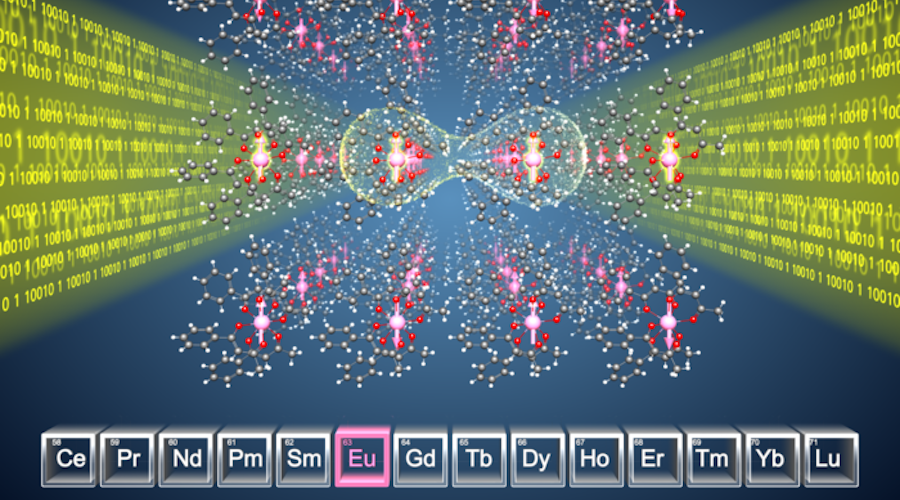Rare earths show potential for quantum communications, processors

As an example, they pose the issue of how quantum systems that can interact with light to create processing functionalities for information and communication through fibre optics still are rare.
“Such platforms must ideally include an interface with light as well as information storage units, which is to say a memory,” the scientists say. “Information processing must also be possible within these units, which take the form of spin. Developing materials that enable a link between spins and light on the quantum level has proven especially difficult.”
Despite such difficulties, they were able to successfully demonstrate the value of europium molecular crystals for quantum communications and processors, which is the result of their ultra-narrow optical transitions enabling optimal interactions with light.
According to the researchers, these crystals are the combined product of two systems already used in quantum technology: rare-earth ions such as europium, and molecular systems.
Rare-earth crystals are known for their excellent optical and spin properties, but their integration in photonic devices is complex. Molecular systems generally lack spins (a storage or computing unit), or on the contrary present optical lines that are too broad to establish a reliable link between spins and light.
In the scientific teams’ view, europium molecular crystals represent a major advance, as they have ultra-narrow linewidths. This translates into long-lived quantum states, which were used to demonstrate the storage of a light pulse inside these molecular crystals.
Moreover, they were able to obtain the first building block for a quantum computer controlled by light. This new material for quantum technologies offers previously unseen properties and paves the way for new architectures for computers and quantum memories in which light will play a central role.




